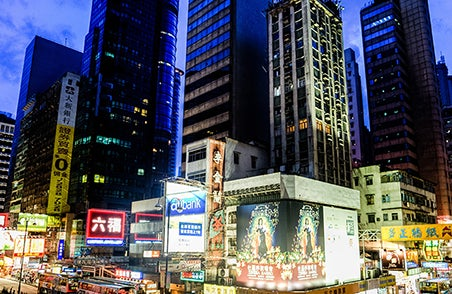APAC Advertisers Head To The Great Outdoors
Billboard advertising may be one of the oldest forms of mass communication around, but–thanks to the ceaseless march of technology–it has never been more popular or more effective.

Billboard advertising may be one of the oldest forms of mass communication around, but–thanks to the ceaseless march of technology–it has never been more popular or more effective.
In fact, creative use of digital display technology is leading a boom in outdoor advertising bookings in the Asia Pacific region.
Standard Media Index, which measures bookings made by media agencies, found “out-of-home,” or outdoor bookings, accounted for 12% of total ad spending by businesses in Australia and New Zealand in the third quarter of 2015, rising in comparison with traditional ad spending avenues, such as newspapers and magazines.
Outdoor ad spending is also set to grow faster in the Asia Pacific than in any other global region, according to Global Industry Analysts Inc. Analysts cited several factors for this, such as innovations in 3D or multifaceted prismatic billboards, the rise of digital ad options, urbanization, and overall growth in transit media placements.
But effective outdoor advertising is as much about positioning as it is about technology content.
The combination of a familiar brand image and a central location can turn an ad billboard into an intrinsic part of a city’s culture, said Charmaine Moldrich, CEO of the Australian Outdoor Media Association. “It’s a funny evolution,” she said. “They start out as big, new, and bold and go on to become an icon of the city.”
In some cities, the signs become the draw card, providing recognisable backdrops for postcards, tourist photos, and filmmakers alike.Times Square, for example, screams New York, Piccadilly Circus said London, and Tokyo’s neon landscape speaks for itself. Melbourne has the famous Skipping Girl, and Sydney-siders need only glance up William Street to see the world-famous Kings Cross Coke sign.
Iconic locations tend to combine three key geographic and demographic features, according to Moldrich:
- Good viewing corridors: Line of sight should be as clear as possible for the full impact of viewing.
- Scale and size of the site: Size does matter when grabbing attention, but it needs to be proportional, with full consideration of the surrounds.
- Audience: Outdoor locations need to be around a hub of activity, shopping destinations, entertainment precincts, airports, and major arterial roads.
With these in mind, we have compiled a list of the top five outdoor locations in Asia, where advertisers have made a big colourful splash to the fullest effect.
Shibuya, Tokyo
“When it comes to outdoor billboard advertising in Tokyo, anything less than 10 metres high just flies under the radar,” noted Jamie Thomson, who runs Brand New Copy, a copywriting agency based in Edinburgh. “Only the biggest, brightest, and boldest ads get noticed in this city.”
Huge crowds congregate in Shibuya, which is famous for its mix of subcultures and trends. It is the busiest and most youth-focused area in Tokyo; it is also home to the world’s busiest pedestrian-crossing, immortalised in photos. An array of shops and large department stores line the streets.

Bandra, Mumbai
Bandra is an integral part of Mumbai. Fondly called the Queen of the Suburbs, Bandra is one of the most happening regions of the city and currently a focal point for a comprehensive urban development.
The area boasts residences of numerous film stars and celebrities and is a must-visit destination for food lovers. Vibrant nightlife combined with sprawling modern shopping malls and designer boutiques add to its appeal for tourists and locals alike.

CentralWorld Plaza, Bangkok
CentralWorld Plaza in Bangkok is the sixth-largest shopping centre in the world. The adjacent CentralWorld Square, which covers an area of 8,000 square metres, is home to large-scale public events, such as the New Year’s Eve Countdown party. It is also prime real estate for outdoor advertisers—in particular, brands such as Panasonic and Coke.

Kings Cross, Sydney
Kings Cross has long been the city’s party and red light district. An iconic location for locals and tourists alike, its combination of bars, cafes, and restaurants attracts a colourful cross section of people.
It’s also home to Sydney’s most iconic billboard. The “Coke Sign” is the largest billboard in the Southern Hemisphere and is currently undergoing a renovation where the neon tubes are being replaced with LED diodes that will light up with different colours.

Causeway Bay, Hong Kong
Locals and visitors are drawn to neon advertisements and glittering hoardings around Causeway Bay. A high-traffic shopping district best known for Hong Kong’s largest department store (DOGO) and the Time Square shopping Mall, Causeway Bay is busy around the clock.
It is often remarked that if shopping were a sport, Causeway Bay would be the home of the Olympics. Despite being a relatively compact area, it would still take at least a whole day to work through the shopping malls, department stores, boutiques, and market stalls. It is home to all the major international brands that operate under a neon blur of advertising signs.
